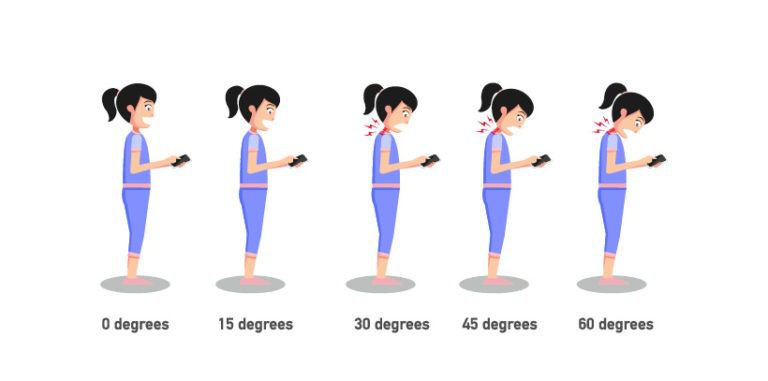Children and adolescents have new problems to deal with in the modern era when it comes to spine health. As students turn to e-learning significantly more during COVID-19, they are at risk of the improper posture known as “text neck.” This condition results from the repeated stress of constantly looking down at a cell phone or digital device.
Technology is an incredible thing, but children and adults alike should learn to use it in a way that doesn’t have negative impacts on the spine.
Tilting the head down for hours at a time does more damage than you realize. Did you know the average human head weighs about a dozen pounds? As the neck bends forward and down (like when emailing, texting, or surfing the web), the head’s weight increases to 27-60 pounds depending on the angle. Imagine carrying an 8-year-old around your neck several hours per day! It can cause soreness, inflammation, muscle strain, pinched nerves, herniated disks, and more. Ultimately, these things can lead to headaches, reduced lung capacity, neurological issues, heart disease, and depression.

It’s important to view your computer, phone, or device with a neutral spine (head and eyes up, not down) and be mindful of your posture. Full body health, including your neck, matters deeply.
Generally, it’s best to be sitting in a regular chair, keeping feet flat on the floor, shoulders back, and neck neutral. Try to have your child keep all digital devices directly in front of their eyes, or slightly below, in order not to cause added pressure on the spine. This is the first generation to have such widespread, unprecedented access to e-learning and device entertainment from birth. According to CBS News, kids ages 8-18 spend more than 7 hours a day looking at screens. From entertainment to education, screens are the dominant mode of communication. This is okay, as long as we — as a culture — are adopting healthy, new practices to keep the body healthy.
Keeping healthy includes things like taking regular breaks, incorporating daily exercise, neck and back stretching, and regular realignment of the neck and spine. Consider setting an alarm throughout the day to modify how your kids are holding or using their digital devices when e-learning. Right now, while we are all forced to be at home outside of the office and school environment, is the time to develop and maintain these habits.
Without a dedicated campaign to share this information, we could see a generation of spine health issues in people far too young to be dealing with them, directly connected to “text neck” specifically.
Learn more about how to protect your spine in our “Tips and Tricks” section!




